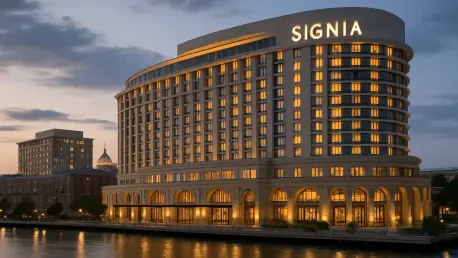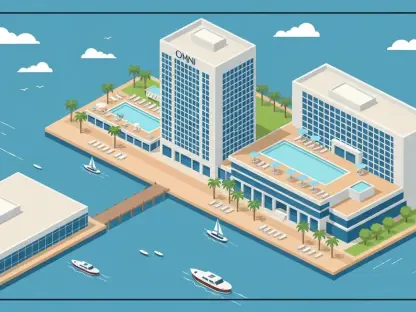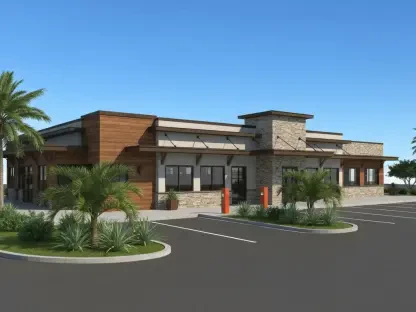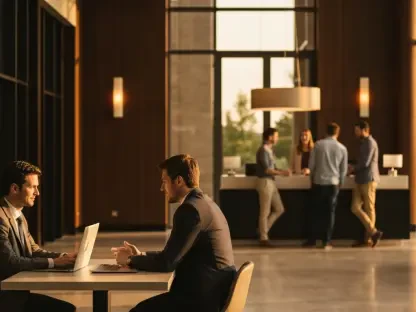What happens when a historic city known for its cobblestone streets and Southern charm gets a modern hospitality giant as its new neighbor? Savannah, Georgia, is on the cusp of a transformative moment with the groundbreaking of a 444-room hotel that promises to reshape its tourism landscape. Picture a destination already steeped in allure, now poised to attract global attention with a development that blends cutting-edge amenities with timeless appeal. This isn’t just about adding rooms—it’s about reimagining what a visit to this iconic city can be.
The significance of this project lies in its potential to elevate Savannah from a beloved leisure spot to a premier convention and events hub. With the hotel set to open in mid-2028, just a few years from now, anticipation is building among local leaders, businesses, and hospitality experts. Positioned as the headquarters property for the Savannah Convention Center, this development represents a bold step toward meeting the growing demand for unique, culturally rich destinations. The question remains: how will this change the game for Savannah’s economy and identity as a travel destination?
Why Savannah’s Latest Hotel Is Turning Heads
The buzz surrounding the new Signia by Hilton in Savannah is palpable, and for good reason. This isn’t merely another hotel; it’s a 444-room powerhouse designed to anchor the city’s convention scene. Announced as a partnership between the Savannah-Georgia Convention Center Authority (SGCCA) and Hilton, the project marks a significant milestone in the city’s hospitality evolution, promising to draw thousands of new visitors annually.
Beyond the sheer scale, the excitement stems from the hotel’s strategic role. Set to be managed by Hilton and owned by SGCCA, it will serve as a cornerstone for the recently expanded Savannah Convention Center. This alignment with a major infrastructure upgrade signals a shift in how the city positions itself in the competitive tourism market, aiming to capture larger events and conferences.
Curiosity abounds about the ripple effects of such a development. How will a property of this magnitude, slated for completion in mid-2028, enhance Savannah’s already magnetic draw? The answer lies in its potential to fuse modern hospitality with the city’s historic charm, creating an irresistible blend for travelers and event planners alike.
Savannah’s Rising Star in Tourism and Conventions
Zooming out, Savannah’s role in Georgia’s tourism economy has never been more critical. Already a standout for its riverfront beauty and storied past, the city is carving out a niche as a go-to spot for conventions. The recent expansion of the Savannah Convention Center has laid the groundwork, increasing capacity and appeal for large-scale gatherings.
This growth aligns with broader trends in travel, where event planners and modern travelers seek destinations that offer both functionality and a sense of place. Savannah delivers on both fronts, with its cultural depth and scenic backdrop. The addition of a flagship hotel tied directly to the convention center is a strategic move to meet these evolving demands, ensuring the city remains competitive.
The timing couldn’t be better. As more organizations prioritize memorable experiences over generic venues, Savannah’s unique blend of history and innovation positions it as a leader. This latest development is not just an add-on but a catalyst for redefining what the city can offer to a global audience.
Breaking Down the Game-Changing Impacts
The transformative potential of this new hotel can be distilled into several key areas that promise to reshape Savannah’s tourism landscape. Economically, the impact is expected to be profound. As the headquarters for the convention center, the property will maximize event capacity, driving revenue to local businesses. SGCCA Board Chairman Mark Smith has emphasized this point, noting the project’s role in fostering prosperity and upward mobility for the community.
On the convention front, the hotel’s offerings are staggering. With over 34,000 square feet of meeting space, including a 13,000-square-foot ballroom, it is built to host major events. Add to that innovations like hybrid ferries for river transport, and Savannah emerges as a standout choice for planners seeking seamless logistics paired with a distinctive setting. These features are set to redefine the city’s appeal in the events industry.
For leisure and cultural travelers, the hotel brings a fresh dimension. Premium amenities such as five food and beverage outlets, an outdoor pool, and Club Signia—a high-end guest experience—cater to diverse visitors. This synergy of business and leisure facilities ensures that Savannah’s historic allure is complemented by modern hospitality, broadening the city’s audience and enhancing visitor stays.
What Leaders Are Saying About This Milestone
Voices from across the spectrum are uniting in optimism about this landmark project. Amy King, Hilton’s vice president of luxury and mixed-use development, expressed pride in bringing the first Signia property to Georgia’s Low Country. Her comments highlight the hotel’s anticipated contribution to Savannah’s tourism growth, underscoring the strategic importance of this location.
Meghan Fitzgerald, brand leader for Signia by Hilton, echoed this sentiment by focusing on the city’s unique fit for the brand. She pointed to Savannah’s rich heritage and vibrant atmosphere as ideal for delivering an upscale hospitality experience. The tailored meeting spaces and premium amenities, she noted, are designed to impress both business and leisure guests with a refined stay.
Locally, Joseph Marinelli, president and CEO of Visit Savannah, offered a perspective grounded in community impact. He emphasized the unique convention experience this development will create, especially when paired with the expanded convention center and new river transport options. His enthusiasm reflects a shared belief among stakeholders that this project will elevate Savannah’s profile on a national stage.
Strategies for Maximizing Long-Term Success
To fully harness the potential of this new hotel, Savannah must adopt targeted strategies. Marketing campaigns should position the city as a premier convention destination, spotlighting the property’s state-of-the-art meeting spaces and cultural appeal. Highlighting these strengths can attract a steady stream of events, boosting visibility and revenue over time.
Partnerships between local businesses and the hotel also hold promise. Curated visitor experiences, such as guided historical tours or dining packages featuring Savannah’s culinary scene, could enhance the guest journey. These collaborations would not only enrich stays but also ensure that economic benefits are distributed across the community, supporting small enterprises.
Finally, community engagement is vital for sustainable success. Initiatives like job training programs in hospitality can prepare residents to take advantage of new opportunities created by the hotel. By prioritizing local involvement, Savannah can ensure that the economic ripple effects of this development are felt broadly, fostering a sense of shared prosperity as the project unfolds.
Reflecting on a Historic Leap Forward
Looking back, the groundbreaking of Signia by Hilton in Savannah stood as a defining moment for the city’s future. It marked a commitment to blending heritage with innovation, setting a precedent for how historic destinations could evolve without losing their soul. The optimism expressed by leaders and stakeholders alike painted a vivid picture of growth and opportunity.
As the journey from 2025 to the projected opening in mid-2028 continued, the focus shifted to preparation. Savannah had the chance to refine its marketing, build partnerships, and engage its community to maximize this development’s impact. These steps were crucial to ensuring that the economic and cultural benefits reached every corner of the region.
Ultimately, the path ahead demanded collaboration and vision. By embracing tailored strategies and fostering local involvement, Savannah could turn this hotel into more than a landmark—it could become a catalyst for enduring transformation. The challenge remained to sustain momentum, ensuring that this milestone paved the way for a brighter, more connected future.









